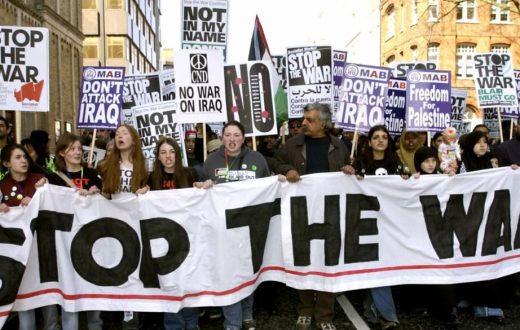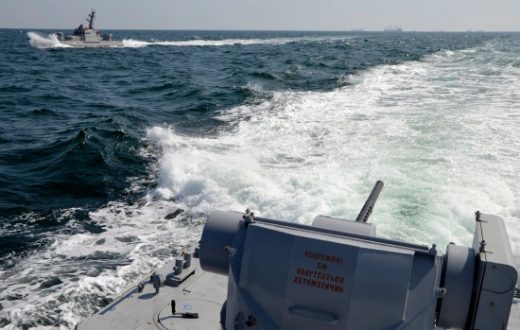Air Power Theory
For most of military history, mankind has not mastered the air, and thus the majority of military theorists have not accounted for it (Buckley 1999: 1). With only a century of military history to rely on, the arguments for and against airpower can seem overly polarized. With the capabilities that were made apparent in WWI, many theorists, such as Douhet (1921), began dreaming of future uses of airpower. Others (Meilinger 1995; Pape 1996; Byman & Waxman 2000; Boot 2003; Pape 2004) urge caution – what was envisaged, however, would not come to pass for many decades, if even then (Meilinger 1995: 11). This section will consider modern theorists’ views on the importance of airpower.
When asking a question as broad as ”Can air forces win wars?”, significant
discussion is invited, for air forces have been used for a wide variety of purposes in a wide variety of wars. In exploring this question, I will argue that it might not be as much about the extent to which wars can be won with air forces, but rather the extent to which they can be won without them.
The Virtues of Air Power
Meilinger (1995) posits that ”whoever controls the air generally controls the surface,” (Meilinger 1995: 3). Douhet (1921) simply proclaims that ”(…) to have command of the air is to have victory,” (Douhet 2009: 25). Warden (2000) argues that since the Third Reich’s attack on Poland, no country has ever won a war against enemy air superiority (Warden 2000: 10). Though some temper their arguments more than others, the consensus is clear: airpower is of great import.
The invention of the airplane lead to important battlefield developments: planes allowed force projection much farther than before. Meilinger makes this argument in his second proposition about airpower: ”Air Power is an inherently strategic force,” (Meilinger 1995: 8). Fronts have historically been the points of contact in armed conflict. With mastery of the air, this was changed – it was now possible to strike well into the enemy heartland, at important industrial, political, and cultural targets (Buckley 1999: 2). Ground and naval forces lack this advantage. Air-forces can achieve strategic goals with maximum effectiveness and minimal costs (Warden 2000: 94 – 95). Regardless of whether or not air power can win wars, it is an important aspect of warfare – lacking airpower against an enemy that has it can be detrimental. Warden again argues that history overwhelmingly supports the claim that acquiring air superiority should be the first order of business – the Six-Day War serves as an excellent example (Warden 2000: 11, 13 – 14).
In the Six-Day War, Israel’s air-force neutralized no less than three air-forces in 24 hours – Egypt, Jordan, and Syria. This paved the way for an Israeli monopoly on airpower for the remainder of the war, which lasted another five days. It is clear that air supremacy, as argued by Warden, granted Israel a tremendous and fatal advantage over its adversaries. The Six-Day War also serves as a good example of the trade-off facing those with air inferiority: if you emerge on the offensive, you become a target for hostile air-forces, but if you stay on the defensive, hostile ground forces are likely to overrun your position, especially with the help of airforces.
Warden also gives a concise overview of the Germans’ effective use of airpower in the 1939 invasion of Poland and the 1940 invasion of France. Germany established air superiority in a matter of days, which allowed them to disrupt the enemy’s maneuvers while protecting and enhancing their own (Warden 2000: 11). The Germans were unlikely to have dominated those campaign to that extent without air superiority (Buckley 1999: 6).
How Great is It Really?
The above arguments paint air superiority as the be-all and end-all of modern warfare. While it is certainly important, that is not to say that airpower equates victory. Many air theorists argue that air superiority is so important it might bring victory, and might be a goal itself (Meilinger 1995: 6). However, this is only so if the air superiority can be exploited. If acquiring air superiority does not bring a tactical advantage, then attaining it is pointless.
Pape (1996; 2004) takes a similar, critical stance on the issue of airpower,
arguing that airpower is rarely a decisive factor (Pape 2004: 117). Airpower itself has not become a revolutionary weapon. Rather, it has changed how we conduct warfare – it works in conjunction with ground forces in a way previously unimagined. Pape argues that this kind of Hammer-and-Anvil strategy – attacking by ground and air simultaneously is highly effective, as it disrupts the enemy’s ability to focus their efforts in offense and defense (Ibid: 119).
Pape (1996) further argues that this type of combat is part of a denial strategy to attack the enemy’s ability to conduct their own operations and strategies (Pape 1996: 19). This partially aligns Pape with Meilinger and Warden – airpower brings advantages, but nevertheless comes with risks that many theorists seem to neglect.
Where WWII and the Six-Day War serve as excellent examples of the success of these tactics, Korea and Vietnam serve as examples of the opposite (Meilinger 1995: 11). This is mainly due to the fact that airpower is more effective in high-intensity conflicts. As Boyd (2018) argues for the OODA Loop, (Observe-Orient-Decide-Act) aimed at inflicting damage and chaos on the enemy. This works well for high-intensity conflicts, where a ’command of time’ will be a boon. In low-intensity conflicts, however, this advantage is largely absent, as we can see in Vietnam (Meilinger 1995: 33).
Boot (2003) is similarly critical. The First and Second Gulf Wars show expert utilization of airpower and combined-arms operations, yet fail to live up to the utterly dominating role of airpower envisaged by the early theorists (Boot 2003: 55). Coalition bombardment certainly crippled Iraqi forces, but ground forces finished the campaign, pushing the Iraqi back. This highlights the importance of Warden’s argument: we must think of the center of gravity. Airpower is not necessarily the best way to attack this target, so blanket statements about it are dangerous.
A Flawed Debate?
Some proponents will argue that the debate over airpower is too polarized, with people on either side claiming complete dominance or uselessness (Keaney & Cohen 1993; Byman & Waxman 2000; Boot 2003). I ally myself with this argument. While the argument for the decisive nature of airpower might be lacking, the uses of airpower have nevertheless been made clear, as shown in numerous wars – World War II, the Korean War, the Six-Day War, and the Gulf War, to name but a few.
Using the 1999 Kosovo War as a case study, Byman & Waxman (2000) examine the claims that air power brought Serbia to its knees. They conclude that while both sides of the debate claimed Kosovo as proof, it vindicates neither (Byman & Waxman 2000: 37). This argument can be applied to most instances of claimed airpower importance – that airpower would not have achieved much without ground forces to exploit
its benefits. Air-forces are, like the Navy and the Army, part of a larger military force, and will achieve little on its own.
Warden (2000) makes arguments that link well with a more nuanced view on airpower, as well. Not two battles or wars will be identical, and issuing a blanket doctrine can be dangerous – what worked wonders in WWII clearly did not in Korea or Vietnam. Thus, commanders must asses the forces at their disposal, and the composition of the enemy fighting force. Warden refers to this as identifying the enemy center of gravity: the point where the enemy is most vulnerable (Warden 2000: 7). Depending on the organization of the enemy, airpower might not be the most effective way to strike at the enemy’s center of gravity, and so a statement like ”air-forces win wars” lacks consideration of different perspectives.
This debate has also dominated the US Armed Forces for some time. Williams (2002) emphasizes synchronization and integration, enforcing the notion that an army is indeed an intricate machine with numerous cogs – debating which one is more dominant is often futile (Williams 2002: 18). The Army’s argument revolves around the imperative role of ground forces in taking and holding targets, but largely ignores the pivotal role played by air-forces in this endeavor. The air-force, on the other hand, is known to argue for their strategic importance; they can strike at enemy targets deep behind enemy lines, that ground forces cannot reach. Williams argues it is difficult to find causal linkages behind air-strikes and enemy capitulation (Ibid: 18).
Buckley (1999) argues that the role of airpower changed after WWII – the
last total war. War, as it was known, has become obsolete, and so the impact of airpower has decreased correspondingly (Buckley 1999: 222). This is especially so when considering the advent of guerrilla warfare and terrorism; cases where air superiority will have little impact (Meilinger 1995; Buckley 1999; Warden 2000). Thus, it might not be the case that any side advocates the entire truth – the role of airpower was, at some point, critical, but might not be as critical now.
Conclusions
Since the dawn of air combat, theorists have prophesied its utter domination. Numerous case studies will vindicate these claims: the German attack on Poland, the Battle of Britain, the Six Day War, and the Gulf War, for instance. This is not, however, to say that it has been infallible. Vietnam and Korea were much less effective examples, and Israel initially struggled to replicate the air supremacy of the Six-Day War during the Yom Kippur War.
The arguments in this paper align with the middle ground. As Pape (2004)
himself concludes: ”Precisions weaponry has not, however, eliminated the need for significant ground forces,” (Pape 2004: 128). Airpower remains an important aspect of the battlefield, but changes in the battlefield have rendered it less effective.
With the obvious strengths of airpower, as well as its limitations, it seems as if the question ”can air forces win wars?” is the wrong question to ask. Rather, we should be asking ”can wars be won without air forces?” The answer to the latter seems much more likely to be ”no”.
Works Cited
Boot, Max. ”The New American Way of War.” Foreign Affairs 82, no. 4 (2003): 41 – 58.
Boyd, John R. A Discourse on Winning and Losing. Maxwell: Air University
Press, 2018.
Buckley, John. Air Power in the Age of Total War. London: UCL Press, 1999.
Byman, Daniel L. and Waxman, Matthew C. ”Kosovo and the great air power debate.” International Security 24, no. 4 (2000): 5 – 38.
Douhet, Giulio. The Command of the Air. Tuscaloosa: University of Alabama
Press, 2009.
Keaney, Thomas A. and Cohen, Eliot A. ”Gulf War Air Power Survey Summary Report.” Department of the Air Force, Washington D.C.. 1993. Available at: http://www.dtic.mil/dtic/tr/fulltext/u2/a273996.pdf. (Accessed October 10, 2018).
Meilinger, Phillip S. ”10 Propositions Regarding Air Power.” Air Force Historical Studies Office. 1995. Available at: http://www.dtic.mil/dtic/tr/fulltext/u2/a469807.pdf. (Accessed October 10, 2018).
Pape, Robert A. ”The True Worth of Air Power.” Foreign Affairs 83, no. 2 (2004): 116 – 130.
Pape, Robert A. Bombing to win: Airpower and coercion in war. Ithaca: Cornell University Press, 1996.
“Top 10 Incredibly Advanced Fighter Jets.” Aviation News, May 19, 2017, https://www.aviationcv.com/aviation-blog/2017/top-10-fighter-jets-world-2017.
Warden, John A. and Boyd, John. ”Air Power’s Quest for Strategic Paralysis.” USAF School of Advanced Airpower Studies. 1995. Available at: http://www.dtic.mil/dtic/tr/fulltext/u2/a291621.pdf. (Accessed October 10,
2018).
Warden, John A. The Air Campaign: Planning for Combat. Lincoln: toExcel,
2000.
Williams, Brett T. ”Effects-Based Operations: Theory, Application, and the Role of Airpower.” United States Air Force. April 9, 2002. Available at: http://www.dtic.mil/dtic/tr/fulltext/u2/a400990.pdf. (Accessed October 14, 2018).








